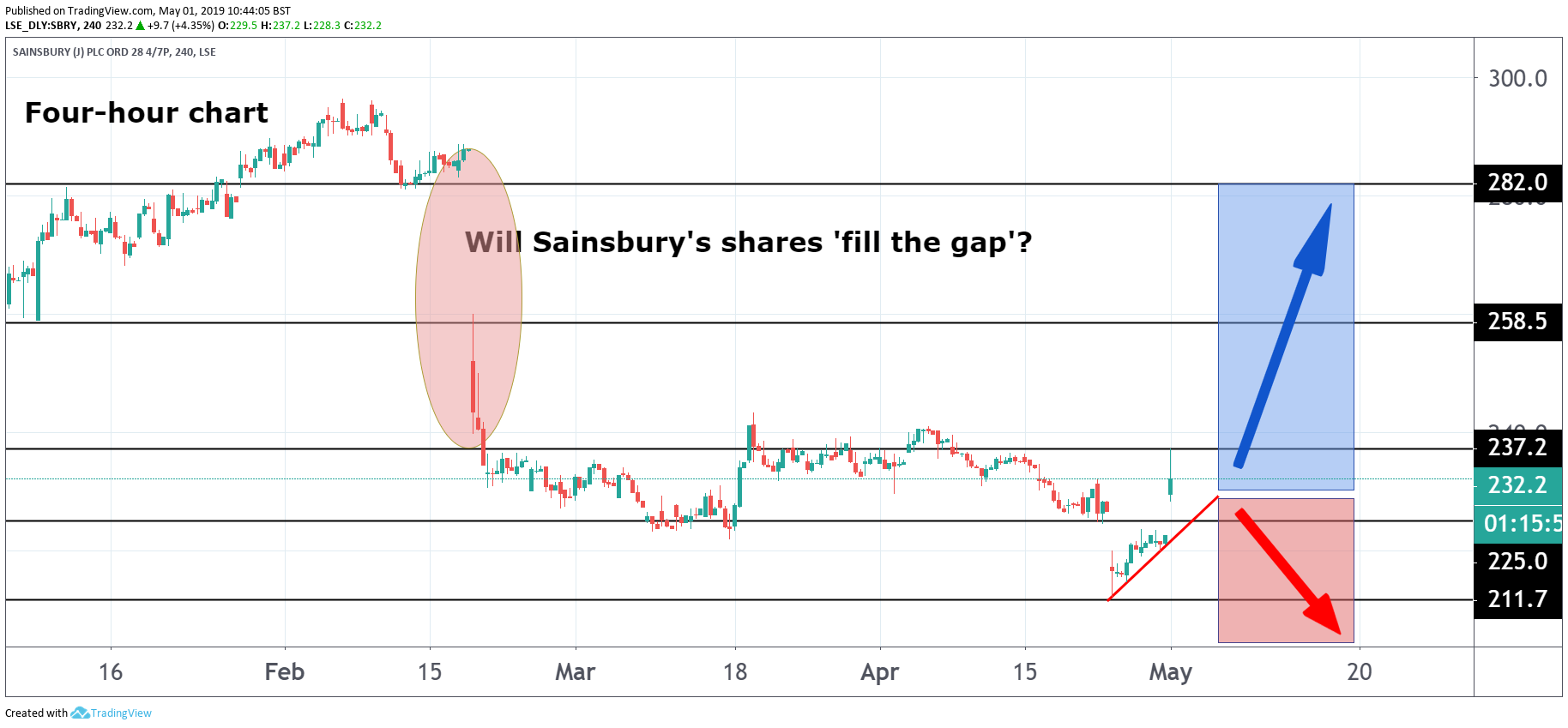
Why bombed-out Sainsbury’s leads the FTSE 100
Hammered since the Asda merger was blocked, our head of markets explains the surge to a three-week high.
Rather than fight the decision of the Competition and Markets Authority (CMA), Sainsbury (LSE:SBRY) and Asda decided to call off the wedding. This leaves a huge strategic question mark over where Sainsbury's goes next.
Not surprisingly, the supermarket giant is endeavouring to give an upbeat outlook to its new plans. Indeed, there are positives within the statement.
A clear success was the purchase of Argos, which is now fully integrated and has delivered £160 million in synergies ahead of plan. The underlying pre-tax profit figure (as opposed to the actual number, which has declined sharply) rose by nearly 8% and was ahead of expectations.
In addition, net debt was significantly reduced by over £220 million, with the promise of much more to come. In the meantime, a healthy cash flow situation has enabled an increase to the dividend, which will consolidate the current attractive yield of 4.6% and the return on capital employed inched higher.

Source: TradingView Past performance is not a guide to future performance
Inevitably, however, a number of factors have left Sainsbury's licking its wounds, not least the near-£50 million spent on the previously proposed merger, ongoing costs of the Argos integration and retail restructuring.
Within the metrics, earnings per share dropped by over 30%, retail sales were broadly flat, clothing sales declined as promotional activity was reduced and a famously fiercely competitive sector shows no signs of easing.
Further investment in stores as well as consolidating the company's relative success in both convenience and online, whilst strengthening the balance sheet are all worthy targets.
It remains to be seen whether this actually represents a fresh strategy, or whether indeed it will mark a return to where Sainsbury previously found itself – needing a partner to fill in its gaps. There is also the possibility that as a result of the CMA ruling, Sainsbury's itself could be vulnerable to a takeover approach.
The company's outlook has resulted in an initially positive share price reaction, up over 6% at one stage, although there is still much to do to recoup previous falls. The failure of the merger resulted in a decline of 23% over the last three months, and over the last year the shares have fallen 28%, as compared to a 1.5% dip for the wider FTSE 100 index.
It is now incumbent on Sainsbury's to reenergise the investment community, where the current market consensus of the shares as a 'sell' may be difficult to budge.
These articles are provided for information purposes only. Occasionally, an opinion about whether to buy or sell a specific investment may be provided by third parties. The content is not intended to be a personal recommendation to buy or sell any financial instrument or product, or to adopt any investment strategy as it is not provided based on an assessment of your investing knowledge and experience, your financial situation or your investment objectives. The value of your investments, and the income derived from them, may go down as well as up. You may not get back all the money that you invest. The investments referred to in this article may not be suitable for all investors, and if in doubt, an investor should seek advice from a qualified investment adviser.